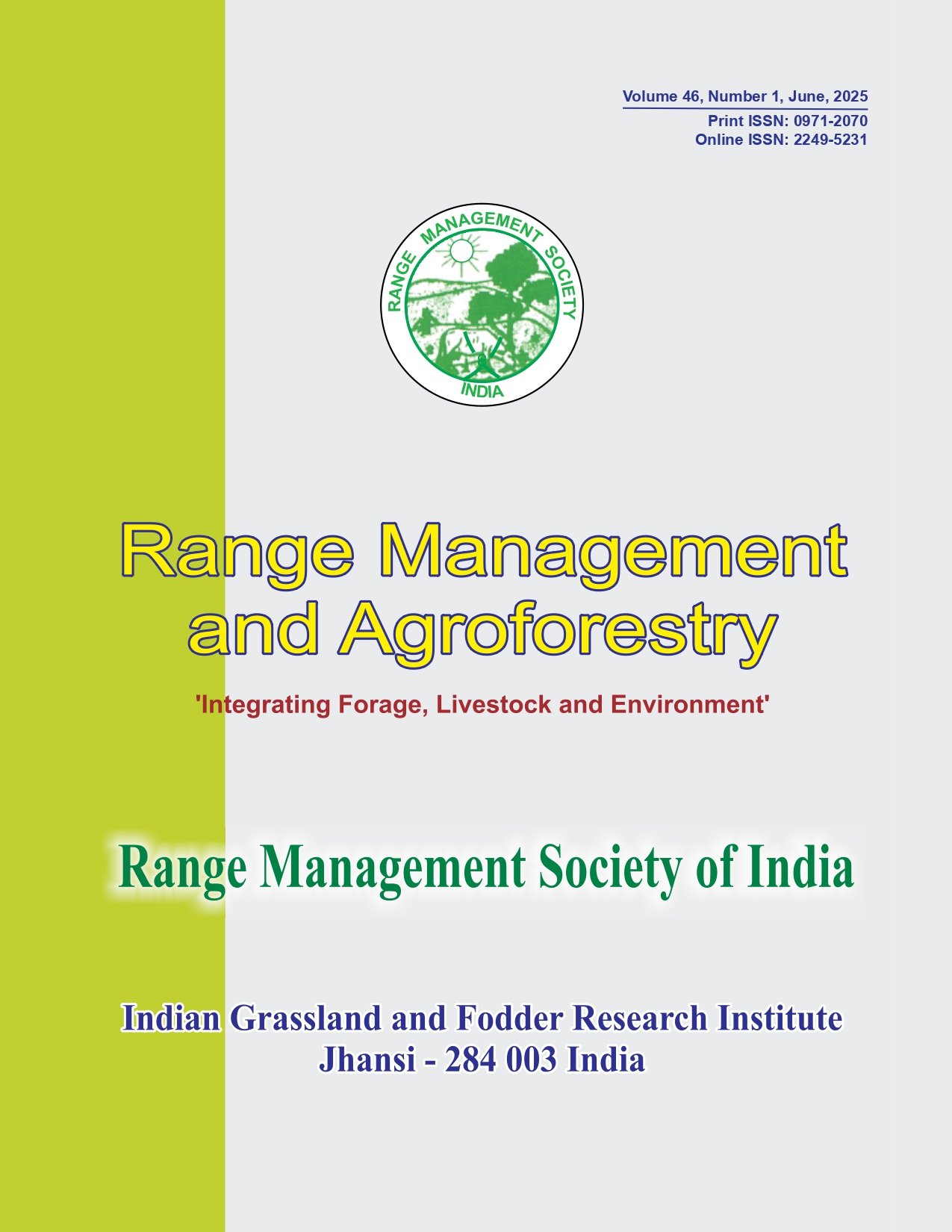Biomass production and carbon sequestration potential of agroforestry systems in Sindh forest division of Kashmir, India
DOI:
https://doi.org/10.59515/rma.2025.v46.i1.21Keywords:
Biomass, Carbon stock, Ganderbal, Herbs, Shrubs, Silvipastoral systems, TreesAbstract
This study aimed to evaluate biomass production and carbon stock potentials of different silvipastoral systems (T1: Cedrus deodara, T2: Robinia pseudoacacia, T3: Cupressus torulosa, T4: Prunus armeniaca) in the Sindh forest division of Kashmir. The highest values of above ground tree biomass (80.57 t ha-1), belowground tree biomass (20.14 t ha-1) and total tree biomass (100.70 t ha-1) were recorded in Ailanthus altissima stand and followed the trend of T5>T1>T3>T2>T6>T4. The highest values of aboveground, belowground and total shrub biomass (4.17 t ha-1, 1.75 t ha-1 and 5.92 t ha-1, respectively) were found in grassland and minimum under Cedrus deodara stand. The total herb biomass production followed the trend of T4>T7>T5>T2>T3>T6>T1. The total vegetational carbon stock varied between 8.18 t ha-1 to 52.39 t ha-1 with a trend of T5 (52.39 t ha-1) > T1 (45.13 t ha-1) > T3 (30.44 t ha-1) >T2 (22.77 t ha-1) > T4 (13.90t ha-1) > T7 (9.68 t ha-1) > T6 (8.18 t ha-1).
Downloads
Downloads
Published
How to Cite
Issue
Section
License
Copyright (c) 2025 Tanveer Ahmad Rather, Amerjeet Singh, A. H. Mughal, Arsheed Ahmad Mir

This work is licensed under a Creative Commons Attribution-ShareAlike 4.0 International License.







